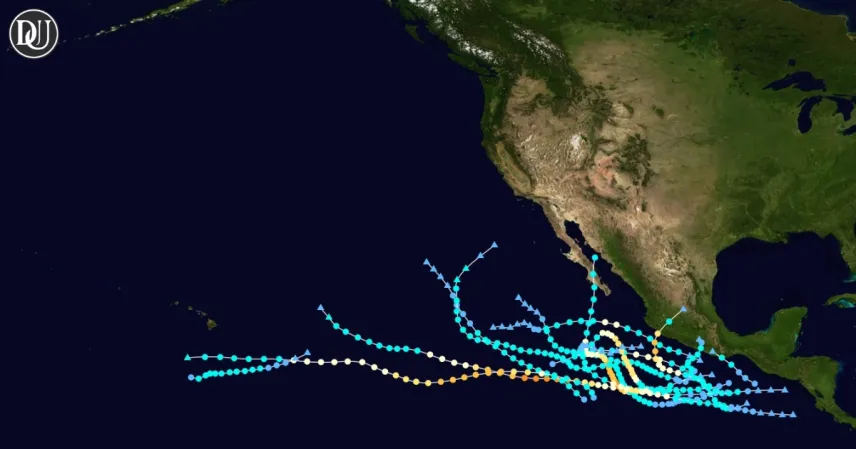The 2025 Eastern Pacific hurricane season has officially begun with the formation of tropical storm alvin 2025. This marks the first named storm of the season in the Northern Hemisphere, appearing several hundred miles south of Mexico’s southern coast. The National Hurricane Center has confirmed that showers and thunderstorms around the storm’s center have become increasingly organized, signaling the birth of tropical storm alvin 2025.
Early Formation and Development
Tropical storm alvin 2025 developed earlier than usual, well ahead of the average June 10 start date for the first named storm in the Eastern Pacific. This early formation is notable considering last year’s season began unusually late, with the first storm forming in July. Satellite data shows that while the storm's circulation is still broad and not fully defined, environmental conditions such as warm sea surface temperatures and low wind shear favor further intensification. Forecasters expect tropical storm alvin 2025 to continue strengthening, potentially reaching hurricane status in the coming days.
Forecast Track and Potential Impact
Currently, tropical storm alvin 2025 is moving west-northwest at about 10 mph. While most forecast models suggest it will remain offshore and not directly impact the U.S., residents along the western coast of Mexico, particularly in Michoacán, Colima, and Jalisco, should stay alert. The storm could bring heavy rainfall, high surf, and dangerous rip currents to these regions later this week. Although no landfall is expected, the potential for local flooding and hazardous sea conditions warrants close monitoring.
Season Outlook and Preparedness
The Eastern Pacific hurricane season officially runs from May 15 through November 30. This year, NOAA predicts a near-average to slightly below-average hurricane season, estimating 12 to 18 named storms, with 5 to 10 becoming hurricanes and 2 to 5 reaching major hurricane strength. Sea surface temperatures near the Mexican coast are above average, which could lead to quicker storm intensification if systems approach land.
While tropical storm alvin 2025 is not expected to make landfall, the storm’s early arrival highlights the importance of preparedness. Coastal residents should stay informed through official weather updates and have emergency plans ready in case conditions change rapidly.
What to Expect Next
Meteorologists will continue to track tropical storm alvin 2025 closely as it moves over warm waters favorable for strengthening. Its progress will be key in shaping forecasts for the rest of the 2025 hurricane season in the Eastern Pacific. The early start serves as a reminder for residents and authorities to remain vigilant throughout the hurricane season.
Tropical storm alvin 2025 underscores the dynamic nature of hurricane activity in the Pacific and the necessity for ongoing monitoring and readiness to protect lives and property along vulnerable coastlines.










